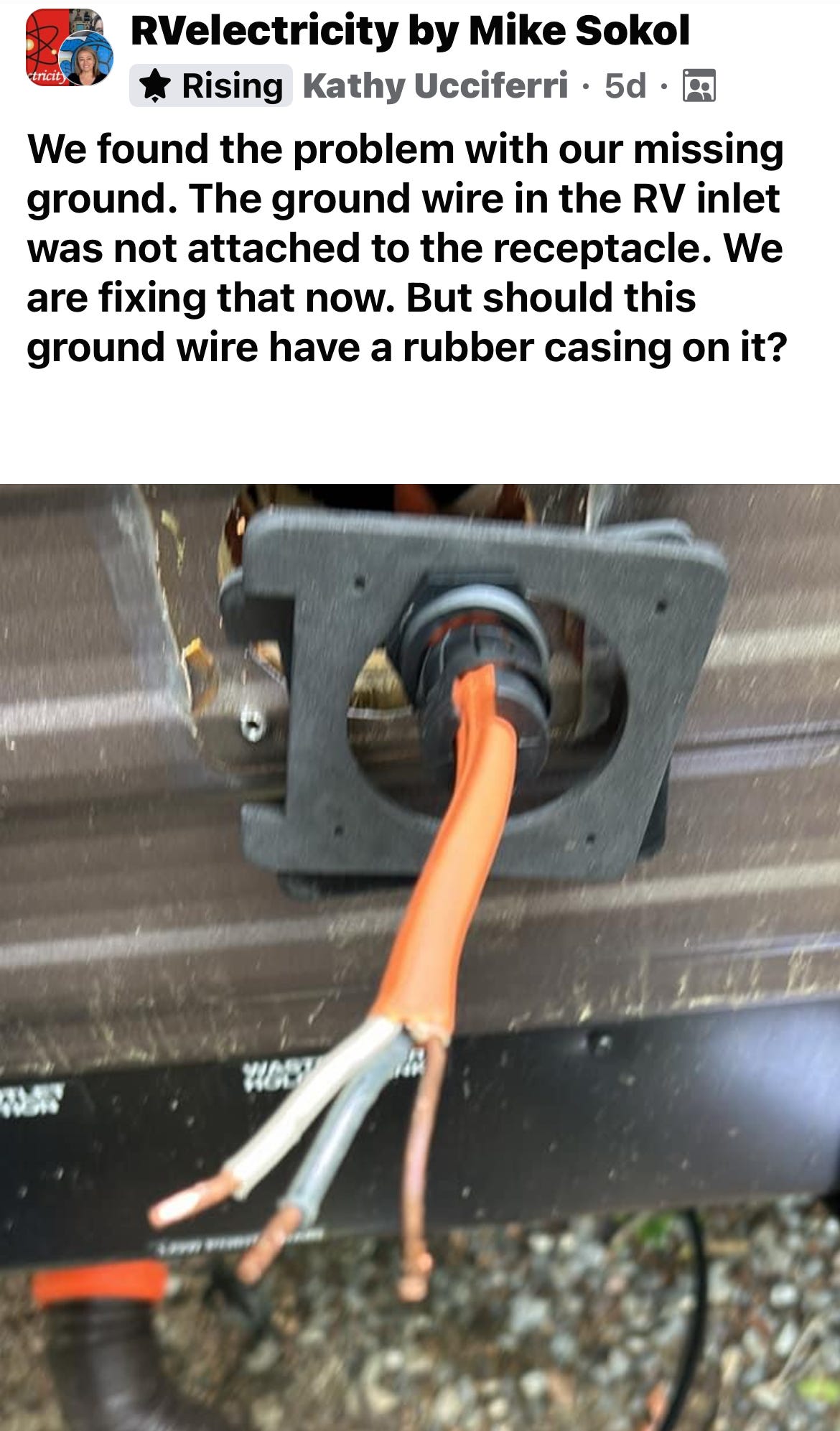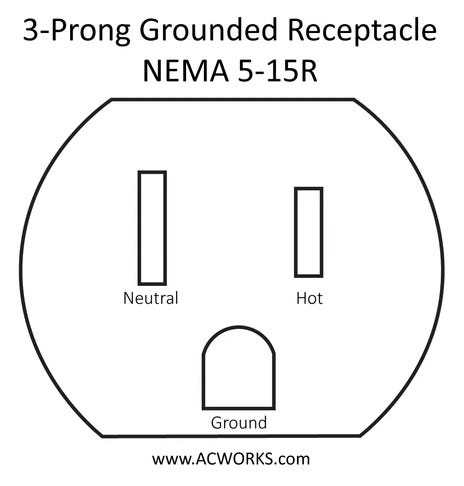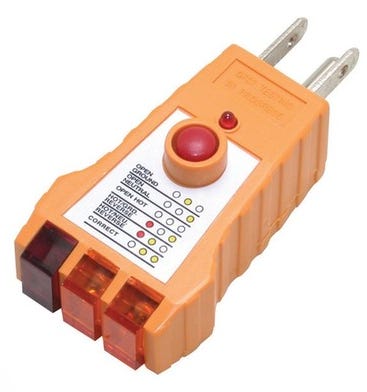New Hot-Skin Voltage Cause!
I just discovered this wiring mistake can be a hot-skin fault current source
Dear Readers,
I should have thought about this earlier, but somehow it slipped right by me. You should all know by now that a hot-skin voltage requires two failure mechanisms.
#1) Lost ground conductor
This is the green or non-insulated wire in your shore power cord that connects the chassis of your RV to the Ground/Neutral bonding point in the campground or residential service (circuit breaker) panel.
If that EGC (Equipment Grounding Conductor) connection is intact, then it should be impossible for your RV to have a hot-skin potential of more than 5 Volts above earth ground.
But if there’s a broken EGC Bonding path, then any line-to-chassis current leakage will turn into a hot-skin up to 120 volts.
Here’s one example of a lost EGC bonding connection
#2) Leakage Current From Line to Chassis
There’s a lot of different ways this type of leakage current can happen which I’ve detailed in numerous articles like this one. Read my in-depth article HERE.
However, if a 15-amp outlet is accidentally miswired with the Neutral and Ground wires reversed, as long as the EGC ground connection is intact everything will appear to operate normally. But the ground conductor is now carrying the return load current instead of the neutral conductor.
Leakage Current from Reversed Neutral/Ground
But there’s a new leakage current scenario I just figured out. If any of the RV’s 15-amp outlets have reversed ground and neutral conductors, AND there’s a break in the EGC bond back to the service panel, then the EGC ground wire won’t be able to carry the return load current. This condition will energize your RV chassis to 120 volts if any appliance in that circuit is turned on.
However, that appliance won’t operate properly because there’s no longer 120-volts between its hot and neutral conductors. But as you turn the appliance on and off, the hot-skin voltage on your RV will appear and disappear.
Testing for Reversed Neutral/Ground Outlets
It’s not a simple test because a basic 3-light tester can’t identify a Reversed Neutral / Ground condition if the EGC Ground Bond is intact. But if you also have a lost EGC Ground connection you’ll get some crazy outlet tester readings.
Stay tuned for Part 2 next week
I’ve figured out a way to test for internal reversed Neutral/Ground outlets in a RV on paper, but I need to build a demonstration of how it works and make a video of the procedure. Give me a week or two and I’ll post it here.
Let’s play safe out there… Mike










On my daughter’s camper her AC wasn’t working. I took my 3 light tester and plugged it into an AC outlet in her camper and it showed reversed polarity. Stared checking and found that the 30 amp plug on the surge protector was not pushed in all the way. When I pushed it in all the way the AC was working.
My friend's Class A is showing reversed polarity in just one AC circuit. We unplugged and checked wiring in all receptacles on that circuit and replaced one damaged receptacle. Problem persists. Suspect circuit is 20A, likely GFCI.
This issue turned up at the same time house batteries were switched to Lithium batteries. I can't see how that switch could be revant, but just sayin'.
Anyone have any thoughts?